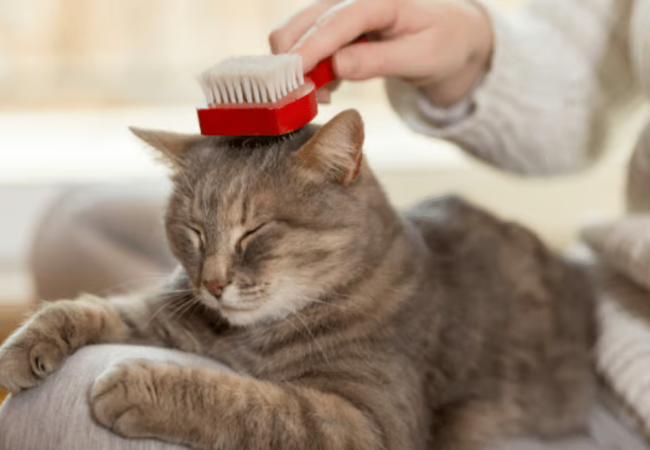Cat Hairballs 2025: What’s Normal, What’s Not & When to Worry 🐱✨

In this article
Cat Hairballs 2025: What’s Normal, What’s Not & When to Worry 🐱✨
By Dr. Duncan Houston BVSc
That awful retching sound at 3AM… followed by a soggy clump of fur. If you live with a cat, hairballs are part of life—but how many are too many? And when are they a sign of something more serious?
I’m Dr. Duncan Houston, veterinarian and founder of Ask A Vet. Let’s break down what’s normal, how to prevent excessive hairballs, and when it’s time to call your vet.
🧶 What Exactly Is a Hairball?
- A hairball (trichobezoar) is a wad of ingested fur that your cat can't pass through their digestive tract
- It’s usually cylindrical, not round—shaped like the esophagus
- It may contain bile, food, or mucus
📈 What’s Normal?
- 1–2 hairballs per month is typical for most cats
- Long-haired cats or heavy groomers may have slightly more
- Increased frequency, gagging without producing hairballs, or weight loss is NOT normal
🕵️♂️ Common Causes of Excessive Hairballs
- Excessive grooming (often due to stress or allergies)
- Long-haired breeds (Persians, Ragdolls, Maine Coons)
- Low-fiber or poor-quality diets
- GI motility issues or underlying digestive disease
🩺 When to Worry
- Retching/gagging without producing a hairball
- Constipation, diarrhea, or decreased appetite
- Weight loss or lethargy
- Dry heaving, abdominal pain, or vomiting foam
In rare cases, hairballs can form intestinal blockages requiring surgery.
🧼 How to Reduce Hairballs at Home
1. Groom Daily
- Brush your cat every day, especially long-haired breeds
- Use slicker brushes, combs, and de-shedding tools
2. Add Fiber
- Switch to a hairball-control diet with added fiber
- Or add canned pumpkin, psyllium, or bran (vet-approved portions)
3. Use Hairball Remedies
- Pet-safe lubricants (e.g., Laxatone, Nutri-Vet) to help pass fur
- Start with a small amount 2–3x per week
4. Reduce Stress
- Hairballs often increase in stressed cats (new home, guests, boredom)
- Provide vertical space, hideaways, toys, and consistent routines
👨⚕️ When to See a Vet
- More than 2 hairballs per week
- Dry heaving without results
- Loss of appetite, vomiting, constipation
- Chronic weight loss or poor coat condition
🔗 Ask A Vet Tip
Use Ask A Vet to upload a video of your cat’s gagging, track hairball frequency, or ask a vet if your cat’s symptoms are normal.
📋 Summary Excerpt
Hairballs are common—but they shouldn’t be constant. A vet explains what’s normal, how to reduce hairballs, and when they signal something more serious.
❓ FAQs
-
Q: How many hairballs are too many?
A: More than two per week is excessive. Also watch for gagging without results or appetite changes. -
Q: Can hairballs make my cat vomit?
A: Yes, but persistent vomiting may point to something else—get it checked out. -
Q: Do hairball-control diets really work?
A: They can! Added fiber and omega-3s help some cats pass fur more easily—but brushing is still key.






